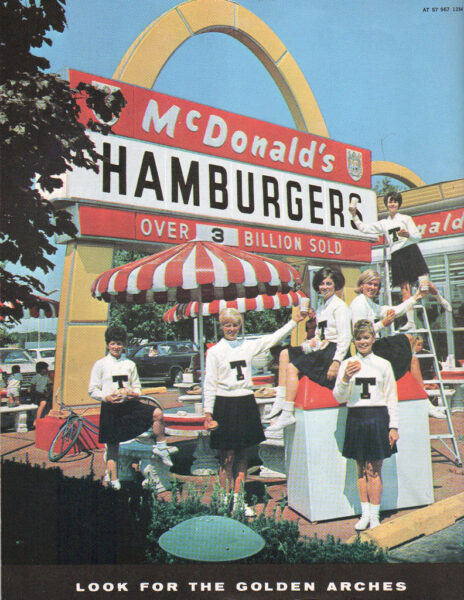Tim Worstall explains why fast food restaurants like McDonalds and Burger King are reported to be introducing new low-priced value meals to try and attract and keep more customers in the current economy:

“McDonald’s restaurant, Toledo OH, 1967” by DBduo Photography is licensed under CC BY-SA 2.0 .
It’s terribly unfashionable to say that minimum wage rises have any effects — other than that the minimum wage workers earn more, of course. It’s supposed to be one of those areas where only good things can come from poking a stick in the market. The justification is that the only jobs these folks can get are slinging fries (If that is the case then I’d probably start with education system reform so that grievance studies graduates are skilled enough to do something else but maybe that’s just me), therefore MaccyD’s and the like have a monopoly on employing them (a “monopsony”) and so omniscient and caring politicians and bureaucrats can correct this market error without there being any side effects.
Hmm. Seems unlikely but that is the story.
[…]
The standard economics of a minimum wage rise is — well, was before the progressive smokeblowing about monopsony — that the money’s got to come from somewhere. It could be that profits fall and therefore there’s less investment — even a move away from having invested in — that activity and so employment falls. Or, wages are higher for those fewer people employed and some lose their jobs — also known as rising productivity and also known as fewer jobs. Or, customers get to pay higher prices, fewer now buy the item and so employment falls as the sector shrinks.
Hmm, well, we can get all serious about monopsony but that one doesn’t work to my mind either as even if profits were excessive a fall in them will still lead to less investment in the sector and we’re back at option 1) above. But, many have convinced themselves.
But here we’ve got a general agreement that Americans are eating fast food less. They’re eating at home more. The only thing that’s changed in the varied cost structures is the price of fast food labour. Sorry, the only thing that’s changed in the *relative* cost structures is that labour as the minimum wage is pushed up. Whatever food inflation has been it’s been no better or worse for MaccyD’s than it has been in Albertsons or King Super. It’s also true that US real incomes have been rising so it’s not a general retreat on the part of consumers. The price of fast food relative to home prepared has risen, people are buying less fast food. The only cost pressure causing this is the pushing up of the minimum wage in recent years (for chains, in California, it’s now $20 an hour).
Myself I take that as being proof of the original and base minimum wage argument in standard economics. Trying to recoup that fall in sales is what is leading to these special offers — and don’t forget they’re special, not for all time and so should be considered advertising, not a long term change in price levels.
As a larger lesson I take it to mean that we should be very wary indeed of those claiming that there’s some special little economic trick that makes what they want to do anyway such a good idea. Why, yes, that does include any special little tricks I might want to claim. But many really did convince themselves that fast food wages were different, that pushing them up would have only good, not ill, effects.
Seems it ain’t so.
Over the weekend, there were a few stories about a small fancy coffee chain whose employees had successfully unionized to get better wages, only for the owners to shut down all three stores because even before the workers unionized, they were losing money on the business. Rather than the higher wages the employees were expecting (while keeping their unusually generous benefits for such entry-level jobs), all their jobs were lost and nobody won. Small businesses like restaurants operate on a far smaller profit margin than most people believe … according to Statistics Canada, the average restaurant of all types made a 4.3% profit in 2022.



